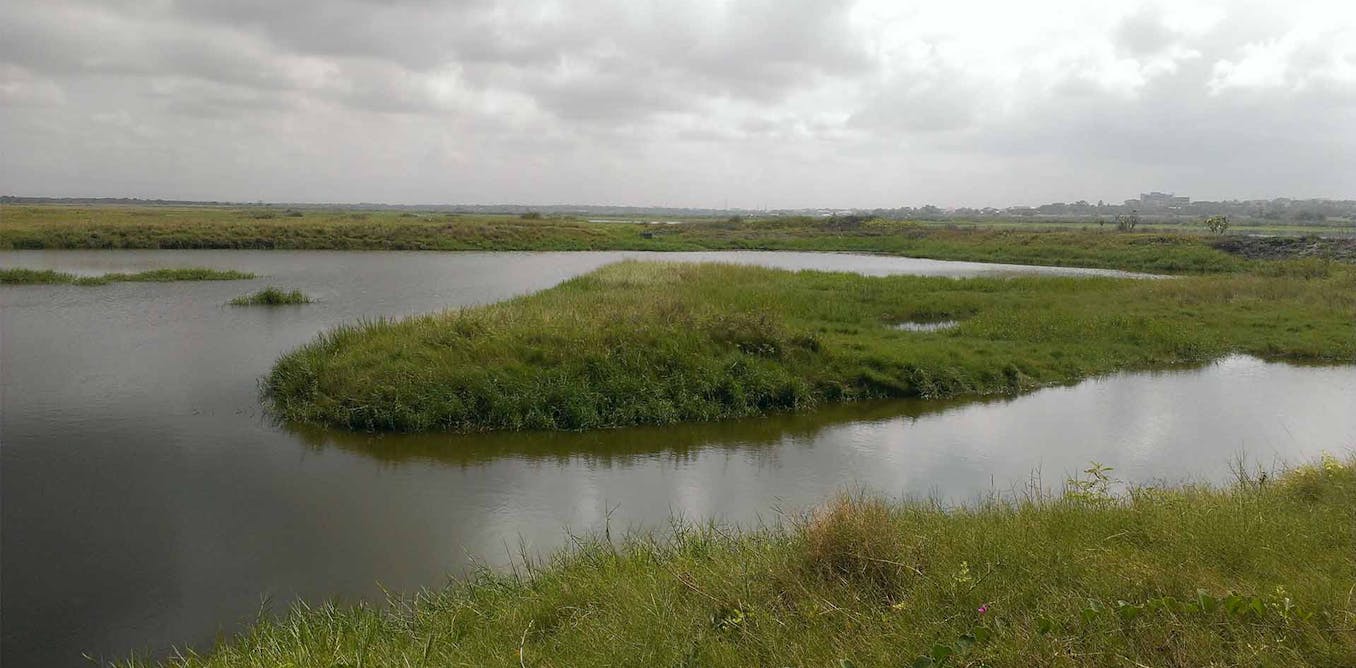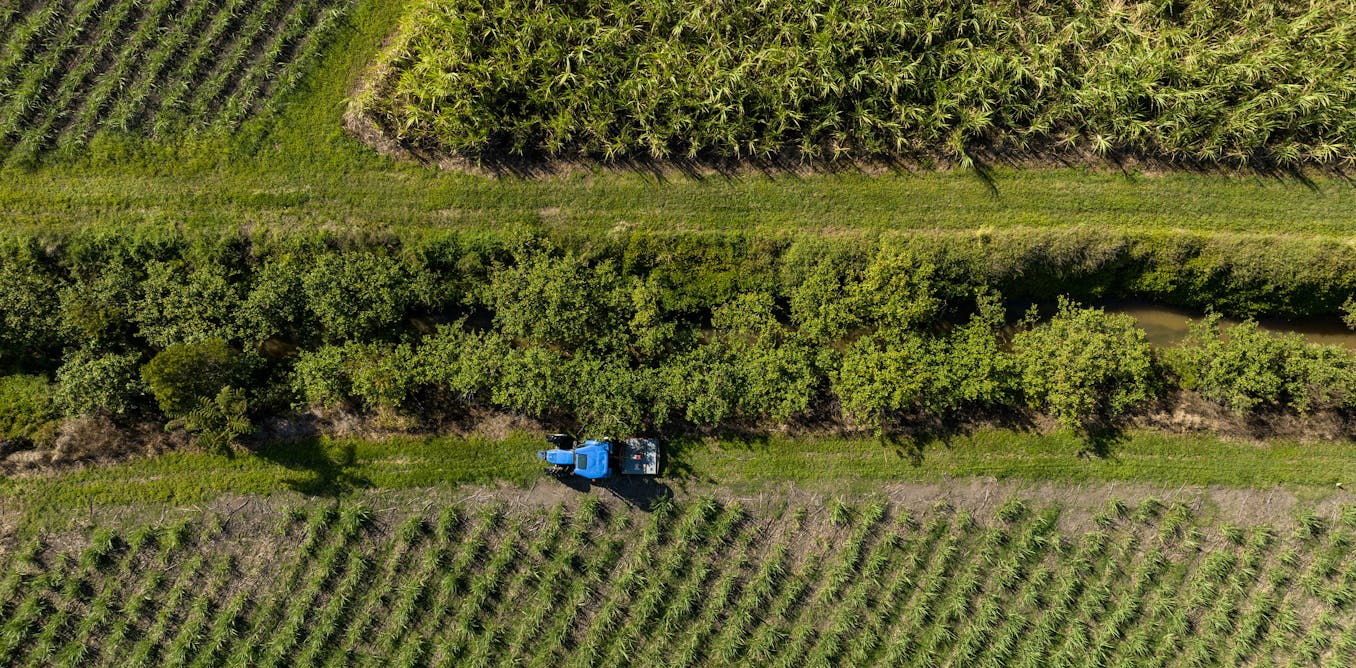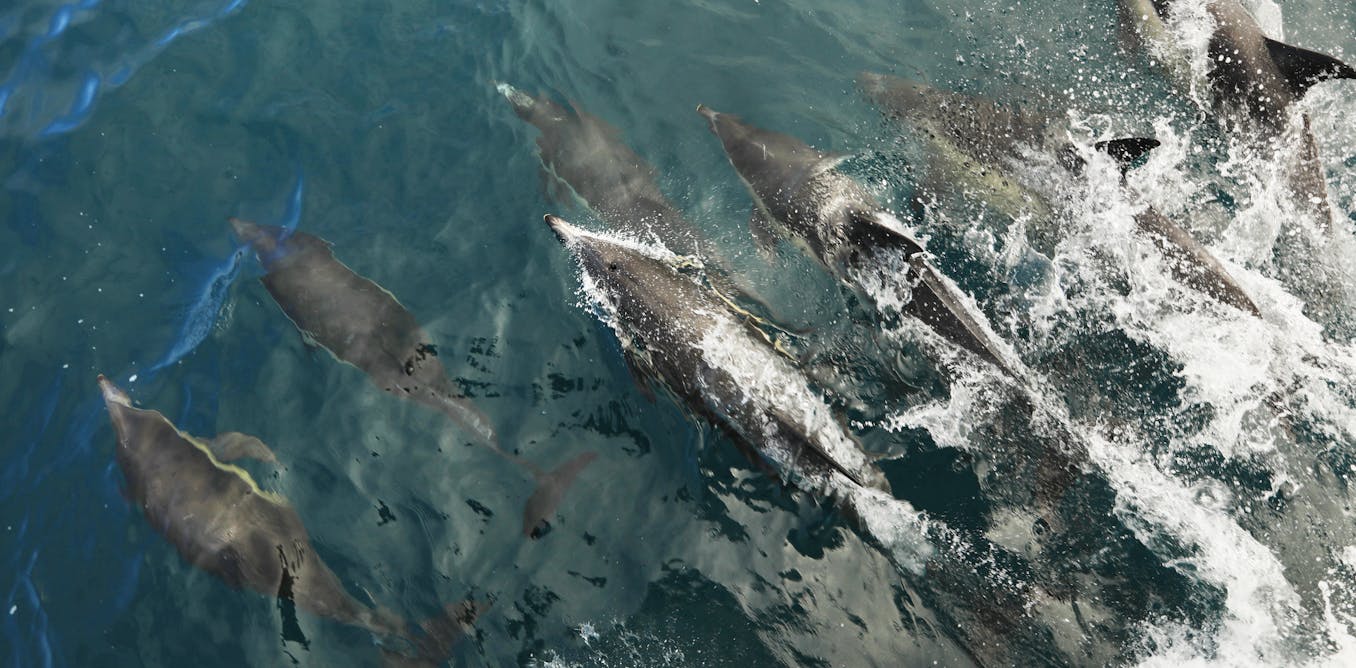Wetlands are vital ecological resources that provide several benefits in urban and peri-urban areas. They slow down flood waters, and act as a source of fishing and farming livelihoods. They also provide socio-cultural benefits for local communities. But some of these valuable ecosystems, due to their presence in prime locations, are at the centre of competing cultural, ecological and economic interests. Property development, especially, is a threat to wetlands.
The 2025 Global Wetland Outlook emphasises that the protection of wetlands is key to sustainable development. However, since 1970, about 411 million hectares of wetlands have been lost. In Africa, degradation is widespread and many are in poor condition.
We are a multidisciplinary team of researchers working in the area of resilience, sustainability and justice in urban transitions.
Our research highlights some of the local-level issues and conflicting interests that are shaping the rapid destruction of the Sakumono Ramsar Site in Tema, Ghana. Under the Ramsar Convention, a Ramsar site is a designated wetland with special natural significance.
We found institutional complicity and the lack of engagement with communities to be key drivers shaping current wetland conditions. Our study proposes a model for enforcing regulations and asserting the community’s right to nature for socio-cultural purposes.
Read more:
A root cause of flooding in Accra: developers clogging up the city’s wetlands
Tema: wetlands in an industrial city
Tema was developed from a small fishing community into an industrialised port city by independent Ghana’s first president, Kwame Nkrumah. Its purpose was to facilitate international trade and vibrant economic development. It is one of Ghana’s most important cities and has been experiencing urban expansion and land use changes. This has led to encroachment in environmentally sensitive areas, including the Ramsar site.
The Sakumono wetland was officially designated a Ramsar site in 1992 to protect its rich biodiversity. It covers about 1,400 hectares and is protected by several regulations, including the Wetland Management Regulations Act, 1999.
But the site has, over the years, witnessed rapid depletion and intense encroachment from property development. Approximately 80% of the Sakumono Ramsar Site has been encroached on, leaving only about 20% of the wetland intact.
Population in the wetland’s catchment area had grown from about 114,600 in 1984 to over 500,000 by 2000, indicating that large numbers of people live around and rely on the wetland. Although the exact number of people currently affected by the wetlands encroachment is unknown, the dense surrounding population suggests that many households, especially those engaged in farming and fishing, have likely experienced reduced access and livelihood displacement. Like other wetlands in Ghana, the Sakumomo Ramsar site risks eventual destruction if nothing is done to reverse current trends.
The president of Ghana has called for heavy punishment for individuals who encroach on Ramsar sites. Both community and institutional respondents in our research claimed, however, that it was the political elites who were behind unbridled property development in the first place.
Read more:
Flooding incidents in Ghana’s capital are on the rise. Researchers chase the cause
Multiple and conflicting interests in wetlands management
The main objective of our study was to analyse stakeholders’ perspectives on the use, value and management of wetlands. We evaluated the impact of these views on the sustainable management of ecologically sensitive areas. We conducted in-depth interviews with community residents, community leaders and opinion leaders. We also interviewed officials from metropolitan and municipal assemblies. The research was conducted in the Sakumono community, where the Sakumono Ramsar site is located.
Conflicting views on wetlands value: while the value of the site lies in its economic and ecological benefits, community residents were more interested in its economic value. That is, how it provides livelihood opportunities through farming and fishing activities.
Residents wondered why developers were allowed to exploit portions of the wetlands for building purposes, while they were prevented from fishing and farming. One of the residents said:
See rich and influential people buying land in the wetland area and using it for building properties. But we are not permitted to fish there.
For state institutions, protecting the wetland meant restricting access for community members. They encouraged activities such as tree planting and periodic desilting.
Conflicting views on wetlands use: the views of stakeholders also showed the changing understanding of the use of wetlands. An official from the forestry commission revealed that the wetland was acquired by the state during the 1980s for conservation. But other institutional officials, such as those of the lands commission, revealed that it had become a prime area for property development. Powerful developers bypass the land registration process and build without a permit.
The size of the Ramsar site has reduced because people are acquiring the wetland, including the buffer area, for residential development. Even though the wetland area is demarcated as a protected area, many of the politically connected developers go behind us and build without a permit.
Conflicting views on wetlands management: our research revealed contradictions between state institutions and community stakeholders. For instance, traditional authorities were of the view that:
Since the management of the wetland is not under our control, we are not responsible for the current developments taking place in and around the demarcated area.
The traditional authorities said they were not consulted and did not benefit from the wetland. This perhaps explains why they watched on as destruction continued. A member of the traditional council said:
As leaders of the community, we are not consulted about how the wetland is managed. You always hear the forestry commission accusing community leaders that we are selling the land. We can’t sell land that does not belong to us.
Towards a community-based stewardship model
Communities should be at the centre of wetlands management. We propose a stewardship-based co-management model that enforces environmental and conservation regulations. It emphasises working with a range of stakeholders. This includes government agencies, traditional authorities and environmentally conscious community members. We call for an updated wetlands management plan that reflects recent changes, but that is also fair, responsible and protective for present and future generations. This is essential for building sustainable communities in Ghana and beyond.

The post “An important wetland in Ghana is under siege. Researchers investigate the real issues” by Stephen Leonard Mensah, PhD Candidate, University of Memphis was published on 11/26/2025 by theconversation.com





































Leave a Reply